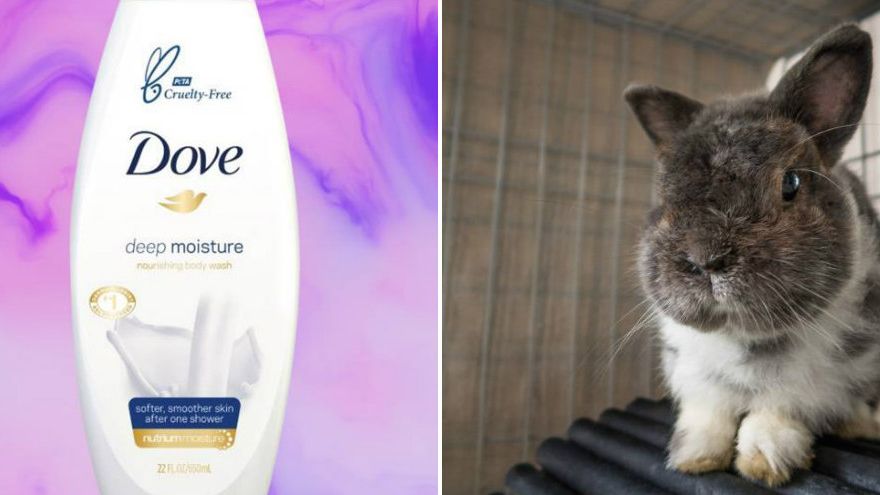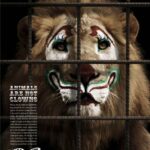In a world increasingly attuned to the ethical considerations of consumer choices, the dialogue surrounding animal testing in the cosmetics industry has taken a significant turn. Unilever, a colossal entity in the personal care sector, has recently announced its support for a global ban on animal-tested cosmetics. This declaration, while promising, invites scrutiny regarding the efficacy and sincerity of the company’s commitment to animal welfare. Is Unilever now truly animal cruelty-free?
The intricacies of this issue delve deep into the operational policies of cosmetics companies and their historical reliance on animal testing for safety assessments of products. Companies in the cosmetics industry have long been viewed through a lens of skepticism by animal rights advocates. For decades, the practice of testing on animals has been vilified for its ethical implications. The question arises: Can a company that once thrived on such a paradigm genuinely pivot towards a humane approach?
Within the context of Unilever’s announcement, it is essential to examine the newly instituted policy updates. Unilever has articulated a commitment to utilize innovative, non-animal testing methodologies in assessing product safety. This shift is both a response to consumer demand for cruelty-free products and a recognition of the advancements in scientific techniques that can replace traditional animal testing. The introduction of in vitro testing and computer modeling represents a paradigm shift in how companies can ensure product safety without inflicting harm on animals.
However, a policy update does not equate to instantaneous transformation. Unilever’s historical reliance on animal testing complicates perceptions of its recent advocacy for a ban. Despite the promise of future cruelty-free practices, skeptics might question whether the company’s past actions align with its current proclamations. This dichotomy places Unilever in a precarious position, where it must diligently prove its sincerity through concrete actions rather than mere declarations.
Unilever’s declaration is notable not only for its impact on the cosmetics industry but also for its potential ripple effects across other sectors. As a major player, Unilever’s pledge to eliminate animal testing could catalyze other corporations to follow suit. In this interconnected landscape, the actions of one influential figure can elevate the discourse surrounding ethical practices within the industry. The significance of this pledge illuminates the growing awareness and advocacy for animal rights among consumers, who increasingly prioritize cruelty-free products.
The controversy surrounding Unilever is not confined to its past testing practices. Another layer of complexity arises from the company’s extensive global operations, particularly in regions where animal testing remains a requisite for regulatory approval. For example, in some markets, such as China, animal testing is mandated by law. This raises a pivotal question: can Unilever maintain its cruelty-free ethos in countries with legally mandated animal testing? This discrepancy presents a moral quandary, as the company juggles compliance with local laws while striving for a global prohibition of animal-tested cosmetics.
Furthermore, understanding Unilever’s position within the broader landscape of corporate accountability is crucial. The company is part of a larger dialogue that scrutinizes the role of consumerism in promoting ethical treatment of animals. In response to societal expectations, a growing number of companies, including competitors, are also striving to adopt cruelty-free practices. This burgeoning wave of ethical awareness in the marketplace represents a fundamental shift in consumer behavior, compelling brands to reassess their practices in order to retain and attract ethically conscious consumers.
From a consumer perspective, the desire for transparency is paramount. Shoppers are not merely interested in whether a product is labeled “cruelty-free”; they seek comprehensive information about the brand’s policies and practices. Detailed disclosures regarding testing protocols, sourcing, and product ingredients can empower consumers to make informed choices. Unilever must bridge the gap between its policy declarations and consumer perceptions through robust transparency and ongoing communication.
In addition to consumer awareness, advocacy groups play a pivotal role in holding corporations accountable. Organizations focused on animal rights are poised to monitor Unilever’s commitments closely. Through campaigns, petitions, and public awareness initiatives, these advocates can influence corporate behaviors, ensuring that promises are not just rhetorical flourishes. The scrutiny from animal welfare organizations reinforces the necessity for companies to substantiate their claims with tangible actions.
Unilever’s adventure toward being recognized as cruelty-free underscores the complexity of ethical business practices. It challenges consumers to engage critically with the brands they support. A simple label is insufficient; rather, the narrative behind a brand’s practices must align with the values it espouses. As Unilever navigates this terrain, consistency will be critical. The journey toward comprehensive animal welfare requires commitment, vigilance, and continuous evolution of practices.
In conclusion, Unilever’s endorsement of a global ban on animal-tested cosmetics signifies a potentially transformative moment in the cosmetics industry. However, whether the company is genuinely cruelty-free remains a contentious issue that demands ongoing scrutiny. The new policies and systemic changes proposed must translate into real-world implementations. A commitment to innovation, transparency, and accountability is vital in proving that Unilever can indeed evolve into a champion for animal rights. The journey of balancing ethical imperatives with corporate responsibility is both necessary and complex, reflecting broader cultural shifts toward compassion and ethical consumerism.







